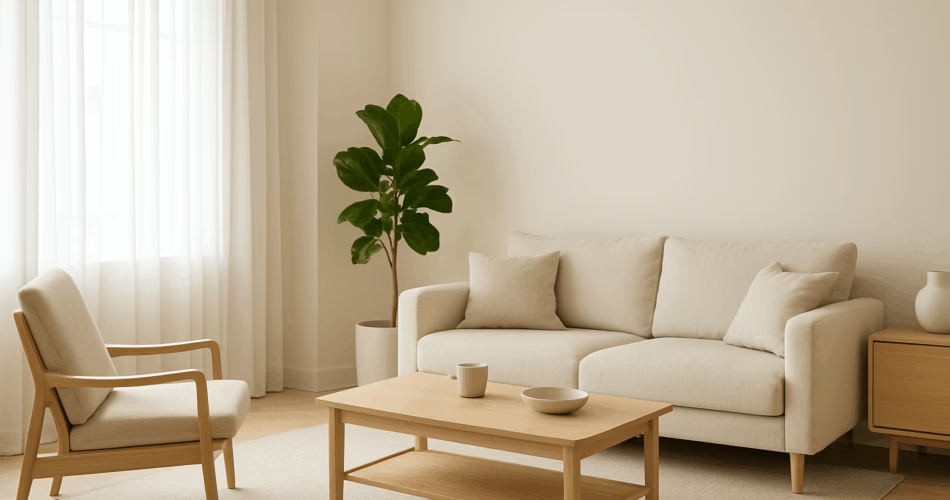Declutter Your Chaos: 9 Steps to Transform Your Space and Mind
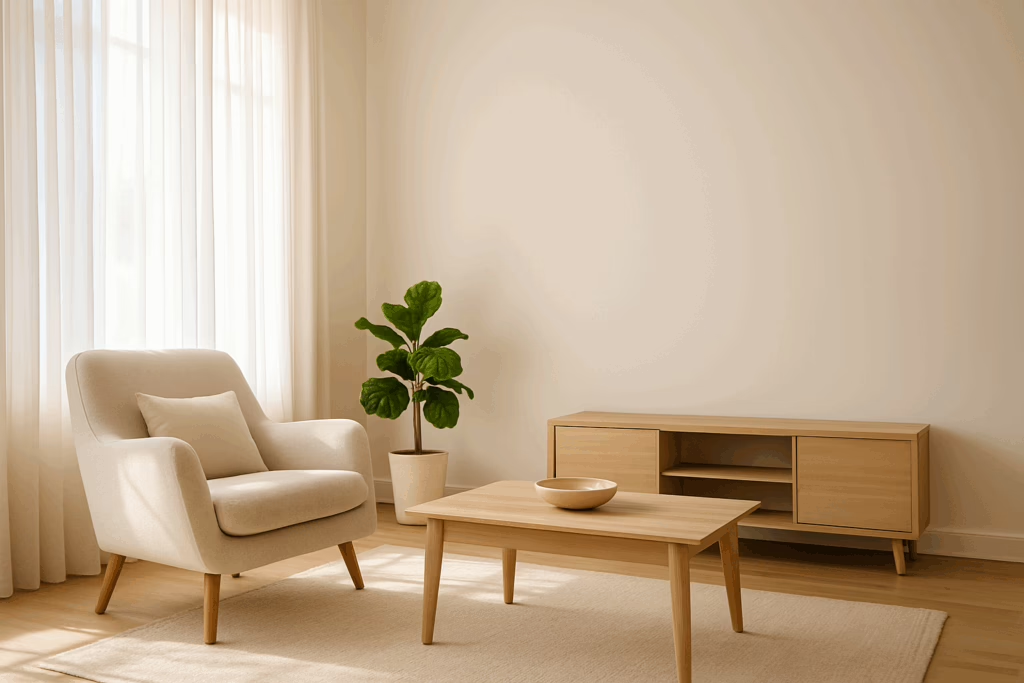
Everywhere you look, there’s a message urging you to “declutter your chaos”—but what does that really mean for you? It isn’t just about cleaning out a closet or making your home look like a magazine. It’s a process that helps you reclaim not just your living space, but your peace of mind. When chaos builds up around you, it creeps into your thoughts, your sleep, and even your relationships.
That’s why learning to declutter your chaos is more than a to-do list; it’s a gentle journey toward feeling lighter, more focused, and less stressed. In this guide, you’ll get practical steps, real-life tips, and the encouragement you need to finally break free from the clutter, one step at a time. Whether you’re new to minimalism or have tried before and felt overwhelmed, you’ll find strategies here that fit any lifestyle, pace, or home.
Why Clutter Feels Overwhelming
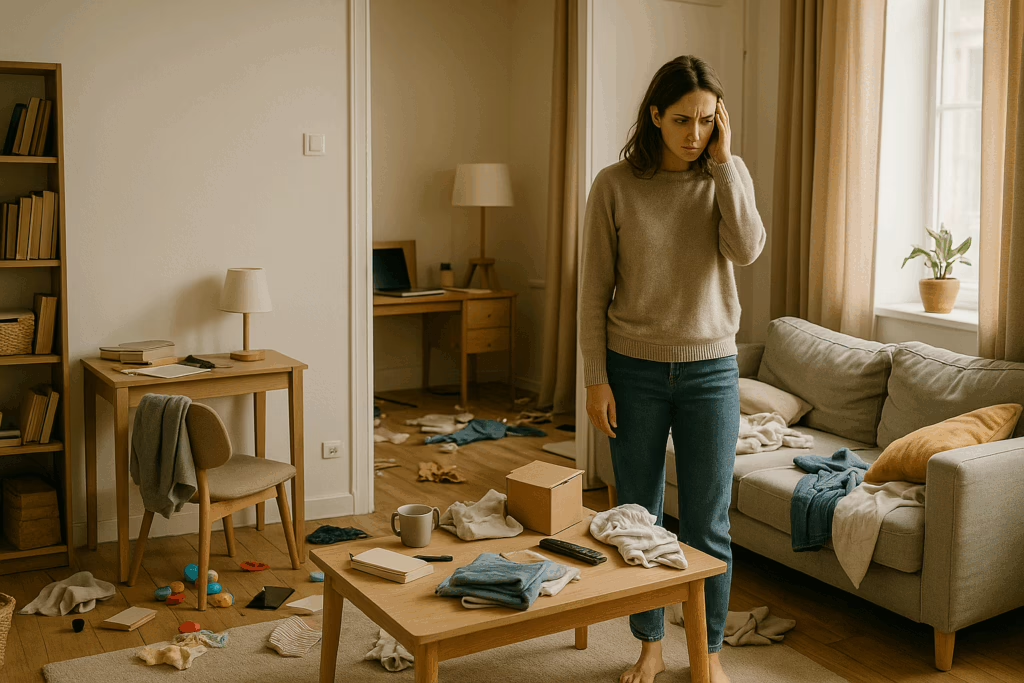
Clutter isn’t just about piles of stuff—it’s a steady drip of stress that can drain your energy every time you walk into a room. Studies show that a messy environment raises cortisol, the body’s main stress hormone, making it harder to relax or focus. Maybe you’ve noticed that when your kitchen counter is covered or your desk is crowded, you feel more distracted or even anxious. That’s because your brain is wired to process everything in your field of vision, which means each piece of clutter becomes another task you haven’t finished.
For many people, trying to declutter your chaos feels overwhelming because it seems like an endless battle, especially when life already feels too busy. But understanding this stress connection is the first step to reclaiming calm in your space and your mind. If you want to dig deeper into the science of clutter and mental health, check out this Harvard Health article.
Declutter Your Chaos Step 1: Start Small and Set Clear Goals
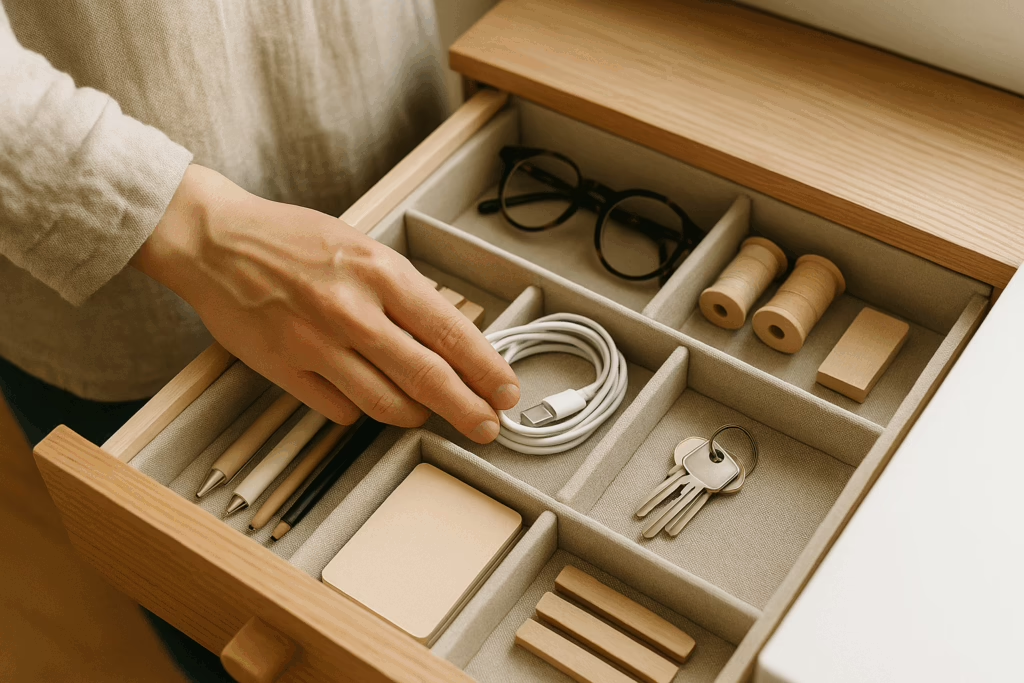
The fastest way to lose motivation is to tackle everything at once. To truly declutter your chaos, start by choosing one small area—a single drawer, a shelf, or even your purse. This focused approach brings an immediate sense of accomplishment, which gives you the boost you need to keep going. Imagine finishing your first task and feeling a lightness that wasn’t there before. That’s the power of starting small.
Next, set a clear, simple goal for each decluttering session. Instead of saying, “I’ll clean the whole house,” say, “I’ll organize my nightstand for the next ten minutes.” Small, specific goals are less intimidating, and they build momentum with every win. Over time, these tiny steps add up, turning the once overwhelming challenge to declutter your chaos into a manageable routine. If you’re struggling to pick a starting point, this article from The Spruce can help you break big projects into doable chunks.
Step 2: The 10-Minute Declutter Method
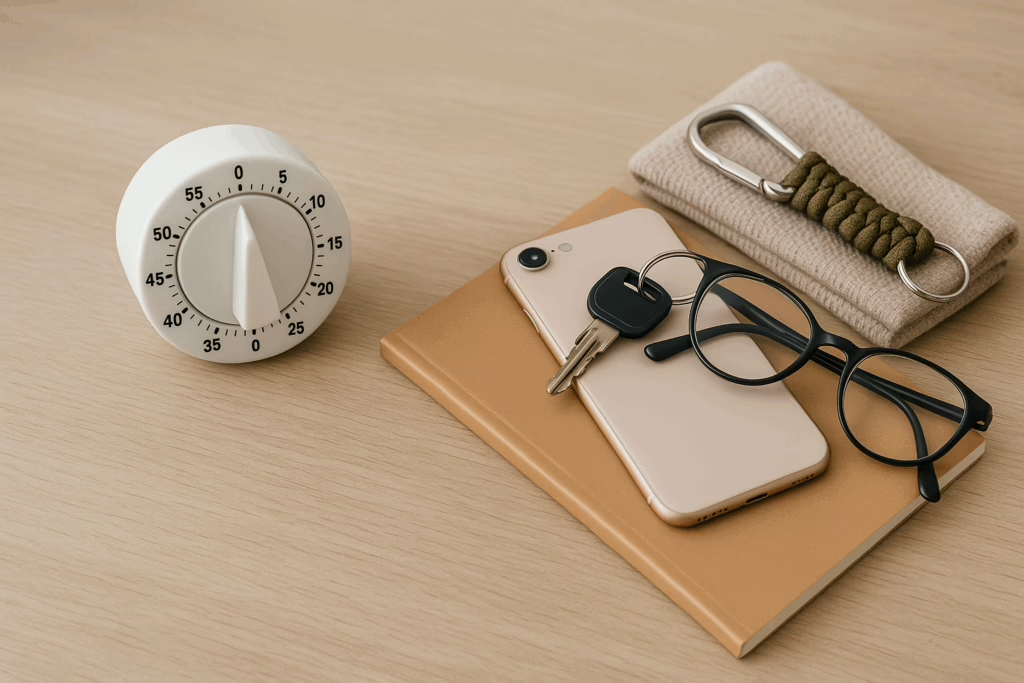
If the idea of deep cleaning your whole home sounds exhausting, the 10-minute declutter method is your secret weapon. Set a timer for just ten minutes, pick a single spot—maybe your entryway table or a bathroom shelf—and work quickly without distractions. You’ll be surprised at how much you can accomplish in a short burst of focused energy. The beauty of this approach is that it fits seamlessly into even the busiest schedules.
Over time, these short decluttering sessions add up, helping you steadily declutter your chaos without feeling overwhelmed. You can use this strategy between meetings, after dinner, or while waiting for your coffee to brew. Many people find that once they start, they’re motivated to keep going even after the timer goes off. For more ideas on fitting minimalism into real life, check out Becoming Minimalist’s tips.
Step 3: Sort, Decide, and Simplify
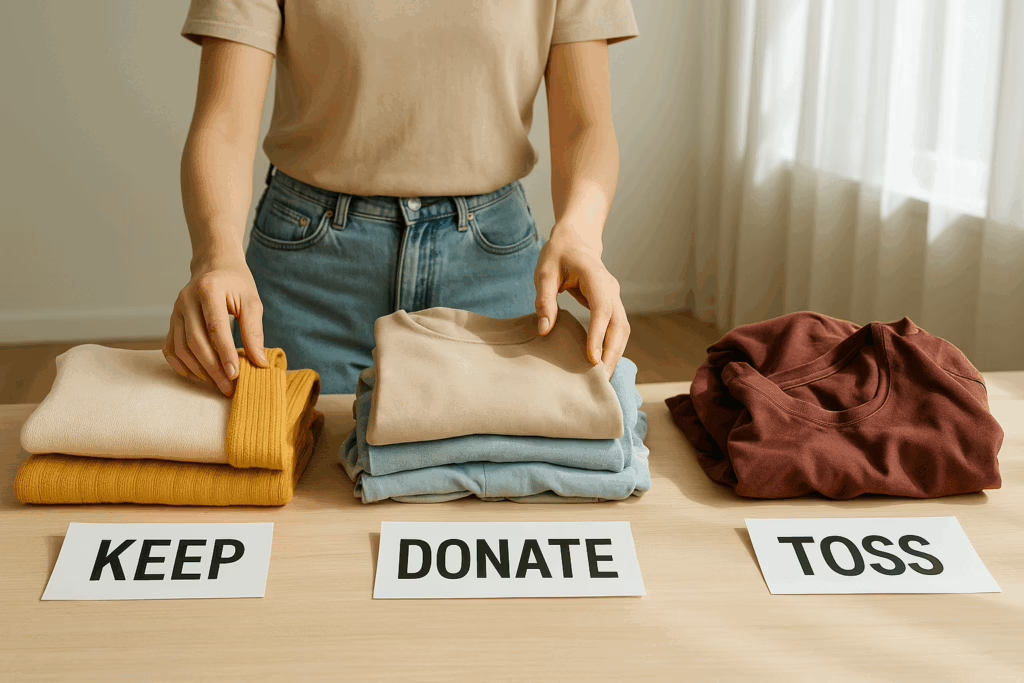
The heart of every successful effort to declutter your chaos is making quick, confident decisions about what stays and what goes. Start by sorting your items into manageable groups—clothes, papers, kitchen gadgets, or whatever is causing the most stress right now. As you handle each item, ask yourself if it truly adds value to your daily life or if it’s just taking up space. Let your instincts guide you, and don’t overthink.
A good rule of thumb is to decide on each item immediately: keep, donate, or toss. This process might feel tough at first, especially if you’re attached to certain things. But remember, each choice you make helps simplify your surroundings and your mind. Over time, these small decisions add up, creating a more peaceful, clutter-free environment. For more inspiration on making decluttering decisions, check out this guide from Apartment Therapy.
Step 4: Conquer the Clutter Hotspots
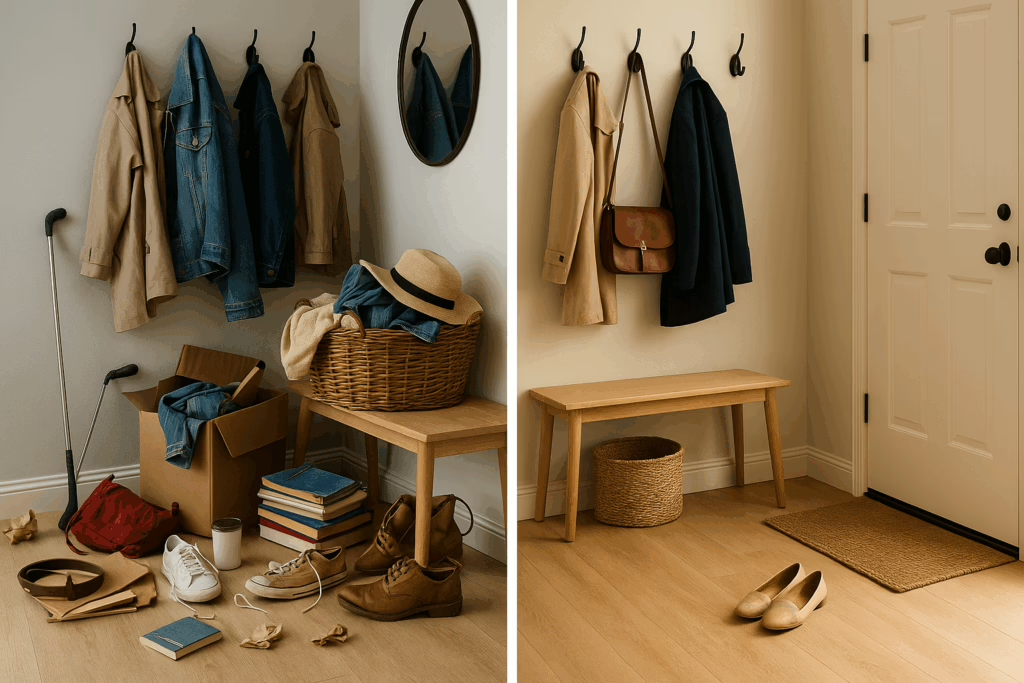
Every home has a few clutter hotspots—those spots where things seem to pile up no matter how hard you try. The entryway might be full of shoes and bags, the kitchen counter covered in unopened mail, or your bedroom closet overflowing with clothes you barely wear. When you focus on these trouble zones, you make the biggest difference in how your space feels day to day.
To truly declutter your chaos, pick one hotspot and tackle it with fresh eyes. Clear everything off, wipe down the surface, and then put back only the items you actually use or need. Set up simple systems, like a basket for keys or a tray for mail, so things don’t accumulate again. By transforming even one of these problem areas, you create a sense of calm that ripples throughout your entire home. For more tips, see Real Simple’s guide to common clutter zones.
Step 5: Digital Declutter for Real-Life Calm
Clutter isn’t just physical—it sneaks into your digital world too, quietly adding to your stress. Overflowing email inboxes, scattered desktop files, and constant notifications all contribute to the chaos you feel each day. When you take time to declutter your chaos in the digital space, you instantly lighten your mental load and make your devices work for you, not against you.
Start small by unsubscribing from emails you never read or archiving old messages. Set aside a few minutes to delete unused apps and organize your phone’s home screen. Clearing out digital clutter helps you feel more in control and gives your mind room to breathe. For more guidance on digital minimalism, check out Cal Newport’s practical advice.
Step 6: Declutter Your Mind With Minimalist Routines
Decluttering isn’t just about what’s around you—it’s also about what’s happening inside your head. Simple, intentional routines help you declutter your chaos from the inside out. Starting your morning with a few quiet moments, journaling, or a mindful cup of coffee creates mental space before the day’s demands take over. These minimalist habits help anchor you, making it easier to tackle physical clutter with a clear mind.
Another helpful routine is a five-minute nightly reset: quickly put away items, reflect on what you accomplished, and plan for tomorrow. Over time, these small acts become a peaceful ritual, easing anxiety and keeping both your mind and space clear. Research supports that routines like these can lower stress and boost happiness. For ideas on building calming habits, see this article from Mindful.org.
Step 7: Maintain Momentum and Celebrate Progress
One of the most common reasons people struggle to declutter your chaos is losing steam after a strong start. The key to lasting change is celebrating your progress, no matter how small it seems. When you finish decluttering a single drawer or clear off your kitchen counter, pause for a moment and notice how much better your space feels. Each small win boosts your motivation to keep going.
To maintain momentum, build decluttering into your regular routine. Set reminders to revisit problem areas weekly or monthly, and remember that keeping your space clear is an ongoing process, not a one-time event. Consider sharing your progress with a friend or online community for extra encouragement. For more inspiration, visit Becoming Minimalist’s guide to staying clutter-free.
Real Stories: How Others Chose to Declutter Their Chaos
Sometimes the best motivation comes from hearing how real people tackled their own mess. Take Emily, a busy mom who used the “one shelf a day” rule to slowly declutter your chaos in her family’s kitchen. Instead of spending hours all at once, she gave herself permission to move at her own pace, which made the process feel manageable and even enjoyable. After a month, her counters stayed clear and her mornings became less frantic.
Or consider James, who always felt buried under digital clutter. By deleting old files for just five minutes each evening, he was able to reclaim valuable space on his laptop and reduce daily stress. Stories like these show that anyone can declutter your chaos—no matter how overwhelming it seems at first. If you have your own story to share, leave a comment below or connect with others on Reddit’s Minimalism Community.
Declutter Your Chaos: Next Steps for a Minimalist Lifestyle
Now that you’ve started to declutter your chaos, the next step is making these changes stick for the long haul. Take a moment to notice how much lighter your space—and your mind—already feel. Remember, you don’t have to be perfect. Minimalism is about progress, not perfection, and every bit of clutter you remove brings you closer to a life with more calm and clarity.
If you’re ready to keep going, set a weekly check-in to maintain your progress. Try exploring new minimalist habits, like mindful shopping or adopting a one-in, one-out rule for new items. For continued support and tips, visit trusted resources like The Minimalists or No Sidebar. Every small step you take to declutter your chaos is a step toward a home—and a life—you truly love.

